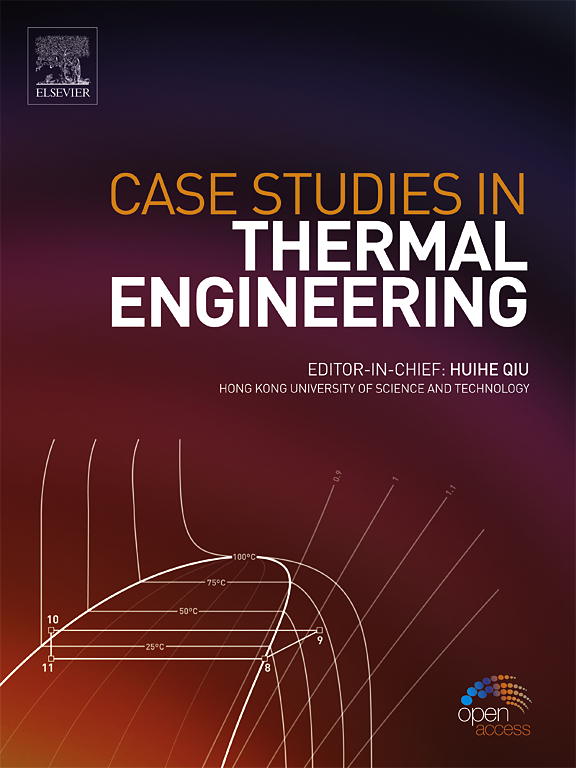CFD study on combustion and emissions characteristics of methane-hydrogen co-firing in an EV burner
IF 6.4
2区 工程技术
Q1 THERMODYNAMICS
引用次数: 0
Abstract
Considerable efforts are being made worldwide to convert carbon-free fuels from gas turbines in the power generation sector while focusing on reducing greenhouse gases. In this study, CFD analysis was conducted to investigate the effects of methane–hydrogen co-firing on the combustion characteristics of a gas turbine combustor for power. This study aims to explore the combustion and emissions characteristics under various operating conditions, such as different co-firing and equivalence ratios. As the hydrogen co-firing ratio increased from 0% to 60%, the flame became increasingly attached to the burner, with the OH reaction zone shifting upstream by up to 80 mm, suggesting a higher risk of flashback owing to hydrogen. The emission characteristics showed an increase in NO电动汽车燃烧器甲烷-氢共燃燃烧及排放特性CFD研究
全世界都在努力将发电部门的燃气轮机转化为无碳燃料,同时注重减少温室气体。本文通过CFD分析,研究了甲烷-氢共燃对燃气轮机动力燃烧室燃烧特性的影响。本研究旨在探讨在不同共烧比和当量比等工况下的燃烧和排放特性。当氢共燃比从0%增加到60%时,火焰越来越靠近燃烧器,OH反应区向上游移动了80mm,表明氢引起闪回的风险更高。在实验和CFD中都观察到,NOx的排放特性增加,在0.7的当量比下达到约140 ppm。基于等效比的运行条件的变化揭示了燃烧器内部再循环区的发展,这导致了火焰结构的变化。火焰区的最高温度约为2200k。这些数值结果可为工业燃气轮机氢共烧的操作指导和可行性评估提供参考。
本文章由计算机程序翻译,如有差异,请以英文原文为准。
求助全文
约1分钟内获得全文
求助全文
来源期刊

Case Studies in Thermal Engineering
Chemical Engineering-Fluid Flow and Transfer Processes
CiteScore
8.60
自引率
11.80%
发文量
812
审稿时长
76 days
期刊介绍:
Case Studies in Thermal Engineering provides a forum for the rapid publication of short, structured Case Studies in Thermal Engineering and related Short Communications. It provides an essential compendium of case studies for researchers and practitioners in the field of thermal engineering and others who are interested in aspects of thermal engineering cases that could affect other engineering processes. The journal not only publishes new and novel case studies, but also provides a forum for the publication of high quality descriptions of classic thermal engineering problems. The scope of the journal includes case studies of thermal engineering problems in components, devices and systems using existing experimental and numerical techniques in the areas of mechanical, aerospace, chemical, medical, thermal management for electronics, heat exchangers, regeneration, solar thermal energy, thermal storage, building energy conservation, and power generation. Case studies of thermal problems in other areas will also be considered.
 求助内容:
求助内容: 应助结果提醒方式:
应助结果提醒方式:


